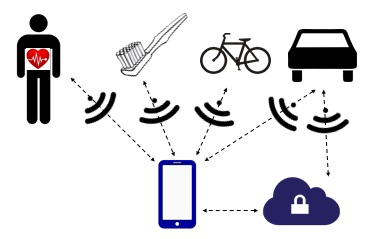Get Ready For Edge Computing’s Rise In 2019
Every company needs edge computing on its technology road map starting in 2019. While many of you may see edge as exclusive to IoT, its value is much wider and will prove as critical to driving up customer experience as content delivery networks (CDN) were in the early days of the web . . .
. . . which explains why you are now seeing edge compute and AI services from all the major cloud vendors and on the road maps of the leading telecom companies. Twenty-seven percent of global telecom decision makers, who responded this year to the Forrester Analytics Global Business Technographics® Mobility Survey, 2018, said that their firms are either implementing or expanding edge computing in 2019. Many of these vendors will require new wireless tools and updated skill sets to achieve this digital transformation. This aligns to Verizon’s recent employee buyout offer, as a result of which over 10,400 of its staff will be gone next year, driving nearly $10 billion in savings that it can apply to its edge-compute-empowered 5G network.
And speaking of CDNs, nearly every one of these vendors is adding edge compute to their core market values. CDNs including Ericsson, Fastly, Limelight, and Akamai are either providing edge compute today or will release it in 2019. Sadly, most enterprises still see CDNs as content-caching solutions for their web and mobile apps. While there’s still some value to that, the stronger value is in the areas listed below.
What’s Driving Edge Computing To Such A Prioritization?
- IoT — sensor data analysis and aggregation. This is clearly the most prominent use case and one that is by no means exclusive to manufacturers. Every government needs to prioritize smart city programs and sensor data AI expansion in its military, transportation, and security agencies. And every financial services, healthcare, and education organization should tie sensor data into their business values. And every SaaS and data software company needs to empower their customers to aggregate sensor data with their tools.

(Source: Forrester)
Interacting with and guiding IoT-enabled equipment increasingly requires that the analysis of data — from its sensors, similar devices in the same area, and additional data sources — must return insights within milliseconds. This simply isn’t possible if the data must move miles away to be analyzed.
- Real-time customer engagement. Driving real-time interactions with your clients no matter where they are located is becoming critical to maintaining their loyalty. This is especially increasing as consumers are expecting to tap their Apple Watch to make payments, track their daily exercise and health statistics, and ask Siri or Alexa to give them location-specific insights. Customer-facing applications need to be deployed in the metros and remote locations where your highest-value customers are based.

(Source: Apple)
- AR/VR/media engagement. Edge video and audio equipment will advance a broad set of industries but not if they can’t deliver their insights close to real-time. For example, if sports organizations want to provide the ability for fans to watch games from any virtual seat at the stadium or from the point of view of the quarterback, center, or coaches’ eyes, these experiences need to happen live or within the same time delays as live TV broadcasts today. This means teams need to aggregate data at the stadium from thousands of cameras, use onsite AI to align the views, and then pass this content up into the video networks.
“Some stadiums are increasing from 200 to 2,000 security cameras,” said Elinor Klavens of Sports Innovation Lab. “We need low latency to process this data.”

(Source: Next Reality)
Similar values are coming to healthcare, enabling doctors with unique skills to live in one country and treat patients in another. The same goes for maintenance and security professionals, who can virtually visit remote locations via augmented reality (locations that might be very dangerous to visit live) and resolve issues.
Want to learn more about how best to incorporate edge computing into your corporate strategy in 2019? Start by reviewing our latest edge computing research:
- “Emerging Tech Spotlight: Edge Computing,” by myself and Brian Hopkins
Forrester defines edge computing as a family of technologies that distributes application data and services where they can best optimize outcomes in a growing set of connected assets. It includes edge infrastructure and edge analytics software.
- “Edge Computing Will Radically Alter Your Infrastructure Strategy,” by Chris Gardner and Andre Kindness
As Chris states: “Edge computing processes and stores data locally and transmits only selected summaries to the cloud. Rather than trying to analyze data in the cloud, edge processes it locally, which is cheaper and easier to manage and enables real-time insights value . . .
“Edge computing requires higher levels of automation than is currently the norm in most tech environments . . .
“Perhaps the most difficult barrier to successful edge implementation will be the available talent pool . . . Your company will succeed or fail based on your people, not the technology itself. Partner with top talent until you can hire your own.”
Reach out to Chris, Brian and myself for a Forrester inquiry and consultation to discuss how best to align edge computing to your corporate mission and strategy.